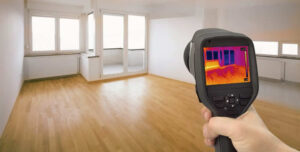Detecting Secret Water Line Leaks: 6 Useful Detection Methods
Detecting Secret Water Line Leaks: 6 Useful Detection Methods
Blog Article
What're your opinions about Detecting hidden plumbing leaks?

Early detection of dripping water lines can minimize a prospective calamity. In addition to saving you money, it will certainly decrease the irritation as well as frustration. The moment you discover a leakage, calling your plumber for fixings is the best service. Nevertheless, some small water leakages might not show up. Below are some hacks that aid if you can not identify it with your nude eyes.
1. Check Out the Water Meter
Inspecting it is a surefire means that helps you uncover leaks. If it relocates, that shows a fast-moving leakage. This means you may have a slow-moving leakage that could even be underground.
2. Examine Water Intake
Assess your water bills and track your water consumption. As the one paying it, you ought to observe if there are any type of disparities. If you identify sudden changes, regardless of your intake coinciding, it implies that you have leaks in your plumbing system. Remember, your water bill need to drop under the exact same range monthly. A sudden spike in your costs suggests a fast-moving leak.
At the same time, a consistent increase each month, despite having the exact same behaviors, shows you have a sluggish leakage that's also slowly intensifying. Call a plumber to extensively check your home, particularly if you feel a cozy location on your flooring with piping beneath.
3. Do a Food Coloring Examination
When it comes to water usage, 30% comes from commodes. If the color in some way infiltrates your bowl during that time without flushing, there's a leakage between the storage tank and dish.
4. Asses Outside Lines
Don't fail to remember to check your outside water lines also. Should water leak out of the link, you have a loosened rubber gasket. One tiny leak can lose loads of water as well as increase your water costs.
5. Check as well as Analyze the Scenario
Homeowners must make it a practice to examine under the sink counters as well as also inside cupboards for any kind of bad odor or mold development. These two red flags show a leak so punctual interest is called for. Doing routine inspections, also bi-annually, can save you from a significant problem.
If you understand your house is already old, keep a careful eye on your heating systems, pipes, pipes etc. Look for discolorations and weakening as the majority of pipelines and devices have a life expectancy. They will certainly likewise naturally degrade due to damage. If you think dripping water lines in your plumbing system, don't await it to escalate. Call an expert plumber today so you do not end up with a terrible mess in your house.
Early detection of leaking water lines can minimize a potential disaster. Some small water leaks might not be noticeable. Inspecting it is a surefire way that assists you uncover leakages. One small leak can throw away bunches of water as well as spike your water expense.
If you suspect dripping water lines in your plumbing system, don't wait for it to intensify.
WARNING SIGNS OF WATER LEAKAGE BEHIND THE WALL
PERSISTENT MUSTY ODORS
As water slowly drips from a leaky pipe inside the wall, flooring and sheetrock stay damp and develop an odor similar to wet cardboard. It generates a musty smell that can help you find hidden leaks.
MOLD IN UNUSUAL AREAS
Mold usually grows in wet areas like kitchens, baths and laundry rooms. If you spot the stuff on walls or baseboards in other rooms of the house, it’s a good indicator of undetected water leaks.
STAINS THAT GROW
When mold thrives around a leaky pipe, it sometimes takes hold on the inside surface of the affected wall. A growing stain on otherwise clean sheetrock is often your sign of a hidden plumbing problem.
PEELING OR BUBBLING WALLPAPER / PAINT
This clue is easy to miss in rooms that don’t get much use. When you see wallpaper separating along seams or paint bubbling or flaking off the wall, blame sheetrock that stays wet because of an undetected leak.
BUCKLED CEILINGS AND STAINED FLOORS
If ceilings or floors in bathrooms, kitchens or laundry areas develop structural problems, don’t rule out constant damp inside the walls. Wet sheetrock can affect adjacent framing, flooring and ceilings.
https://www.servicemasterbyzaba.com/blog/how-to-detect-water-leakage-in-walls/

I found that post about Detecting hidden plumbing leaks while doing research the web. I beg you set aside a second to share this write-up if you enjoyed it. Thanks a bunch for your time. Don't hesitate to pay a visit to our website back soon.
24/7 ready, dial! Report this page